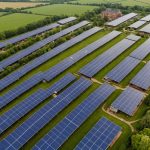Overview of Conservation Areas in the UK
Conservation areas in the UK play a crucial role in preserving the architectural and historical significance of specific regions. These designated spaces are recognised for their distinct character, often encompassing not just individual buildings but entire streets or areas whose collective appearance is valued. By maintaining the integrity of these regions, conservation areas ensure that alterations or new developments are sympathetic to their surroundings.
There are various types of conservation areas in the UK, ranging from bustling city centres to serene rural landscapes. Each type presents unique characteristics and challenges, influencing UK real estate decisions significantly. Cities like Bath align with urban conservation, preserving Georgian architecture, while rural areas protect natural landscapes and village structures.
Also to see : Navigating the financial risks of buying off-plan properties in the uk: essential insights for savvy investors
Investment trends within conservation areas often display robust growth. Properties in these areas tend to experience a heightened interest due to their unique appeal and restricted availability, translating into a potentially promising return on property investment. However, investing in these areas requires understanding specific regulations that govern alterations and developments to preserve the character of the area. Being informed about these aspects can greatly enhance property investment strategies within the UK market.
Financial Benefits of Investing in Conservation Areas
Investing in conservation areas carries notable financial advantages. Historically, properties within these areas have demonstrated a consistent return on investment (ROI). This stability often arises from their unique charm and limited availability, maintaining demand even during broader market downturns. When comparing the financial performance of conservation areas with the general market, properties in these regions typically experience higher appreciation rates.
Topic to read : Navigating tax implications: gifting uk property to family members explained
Long-term stability is a key attraction for investors. Over time, conservation areas tend to resist volatility better than non-designated regions. This can be attributed to strict regulations that preserve architectural integrity, creating a timeless appeal and enhancing property appreciation. Additionally, the allure of residing in a historically rich environment often translates into higher rental yields and resale values.
For individuals seeking sustainable growth, these properties offer promising prospects. As UK real estate continues to evolve, the financial viability of investing in conservation areas remains strong, drawing interest from both seasoned investors and newcomers looking to diversify their portfolios. Understanding and capitalising on these benefits can lead to fruitful investment outcomes in the UK property market.
Government Incentives and Support
Government incentives play a significant role in encouraging investments in conservation areas. These initiatives often include tax benefits, such as relief programs that reduce the tax burden on investors, thereby making property investments more attractive. For instance, certain schemes allow deductions for costs associated with maintaining or enhancing property within conservation areas.
Beyond direct tax incentives, there are also various investment grants available to support restoration and development projects. These grants aim to preserve the unique character of conservation areas while supporting investors financially. Communities benefit, as these incentives help safeguard historical integrity and boost local economies.
Illustrating the impact of these incentives, case studies show successful examples of investors leveraging government support. These projects highlight how strategic use of available programs can significantly enhance return on investment. Investors can access resources and guidance from local authorities to navigate these opportunities effectively. By understanding and capitalising on government incentives, investors can mitigate risks and maximise their potential gains, driving sustainable growth in these prized regions. This strategic approach aligns investors’ interests with broader conservation efforts, preserving both the architectural character and economic vitality of the areas.
Case Studies of Successful Investments
Engaging with investment case studies can provide invaluable insights into the rewarding potential of conservation areas. These success stories often highlight properties that have achieved robust financial returns due to careful investment strategies and adherence to local conservation guidelines. By closely examining these examples, prospective investors can gain a better understanding of the practical examples of maximising opportunities within these unique regions.
A notable case is the restoration of a Georgian townhouse in Bath. This project not only preserved historical elements but also incorporated modern amenities, leading to a substantial increase in market value. Analysing the ROI of such projects reveals that an understanding of local regulations and creative renovations can enhance property value while maintaining historical integrity.
Key strategies learned from these case studies include diligent research into any specific regulations and community preferences, as well as strategic planning of renovations which respect historical contexts. These lessons learned illustrate how investments in conservation areas can strike a balance between aesthetic preservation and economic profit. For those entering the UK real estate market, embracing these insights can lead to successful and rewarding property investment endeavours.
Market Trends and Future Predictions
Navigating the market trends in conservation area investments reveals a fascinating tapestry of future possibilities. Current trends suggest an increasing demand for properties in these regions, largely due to their historic charm and limited availability. Investors find these assets attractive as future investments, anticipating appreciation in value.
Expert predictions paint a promising future for property values within conservation areas, driven by heightened interest in preserving cultural heritage. This interest is fostered by the unique architectural elements these areas offer, which often outperform general property markets in terms of appreciation rates. Real estate experts foresee an upward trajectory in demand, especially in areas with robust preservation policies.
The implications of sustainable development cannot be overstated. As environmental consciousness burgeons, integrating eco-friendly practices in property developments becomes crucial. Conservation areas are primed for this shift, balancing development with environmental responsibility.
For investors, understanding these trends is vital. Emphasising sustainability could generate new opportunities, making properties more desirable to an eco-aware market. Thus, leveraging current trends and predictions can enable informed decision-making, aligning investment strategies with emerging market demands.
Practical Tips for Prospective Investors
Investing in conservation areas within the UK requires a strategic approach to maximise potential returns. Careful research and understanding of the unique attributes of these areas can help investors make informed decisions.
Research Strategies
- Study the historical context of the area. Understanding the architectural or environmental significance can provide insights into potential property value.
- Familiarise yourself with local regulations and planning constraints that impact alterations and developments.
Evaluating Potential Investments
- Assess the condition of properties, considering costs of restoration or preservation efforts which often affect financial projections.
- Compare similar properties within the UK’s broader real estate market to evaluate comparative advantages and forecast property appreciation.
Networking and Resources
- Engage with local councils and conservation agencies. These bodies offer resources and insights into ongoing conservation efforts and may highlight opportunities or funding support.
- Join investor networks specialising in property investment to share experiences and strategies specific to conservation areas.
By leveraging these tips, investors can navigate the unique landscape of conservation areas confidently, blending property potential with UK real estate market dynamics.
Sustainable Investment Strategies
In the UK real estate market, incorporating sustainable investing in conservation areas is increasingly critical. Acknowledging the environmental impact of development is essential in these protected zones. By adopting eco-friendly practices, investors can ensure that property improvements align with both preservation goals and environmental responsibility.
One strategy for integrating sustainability is to utilise renewable energy solutions in property developments. This includes the installation of solar panels or the use of energy-efficient systems, both of which reduce carbon footprints and align with the broader goals of conserving natural resources.
Investors must strike a balance between profitability and sustainability. By focusing on long-term strategies, such as energy conservation measures and sustainable building materials, it is possible to enhance property value while protecting the unique characteristics of conservation sites.
In addition, nurturing community relationships and understanding local ecological contexts are crucial components of sustainable investing. Engaging with local stakeholders ensures that developments are considerate of both the region’s historical context and its environmental significance. Ultimately, the integration of these sustainable practices fosters not only economic growth but also a greener, more responsible real estate landscape in conservation areas.







